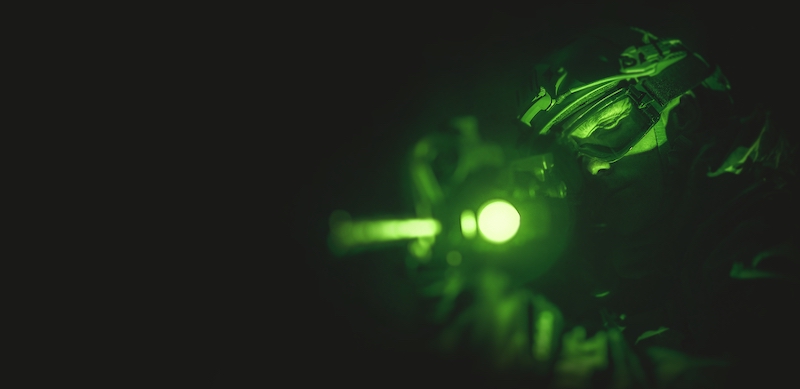Introduction
Nature is a master artist, and one of its most ingenious creations is the phenomenon of camouflage. Whether it’s a predator blending seamlessly into its environment or a prey species avoiding detection, camouflage plays a pivotal role in survival. This intricate adaptation is not limited to the animal kingdom but is also replicated by humans in various ways. In this article, we will delve into the captivating world of camouflage, exploring its mechanisms, various types, and real-world examples that showcase its brilliance.
The Mechanisms Behind Camouflage
Camouflage, often referred to as “crypsis,” is the art of concealing oneself by resembling the surroundings. It relies on exploiting the perceptual and cognitive processes of both predators and prey. There are several mechanisms through which camouflage achieves its stunning effects:
- Color Matching: Many creatures adopt colors that mirror their surroundings. Consider the fascinating case of the peppered moth during the Industrial Revolution. Originally light-colored, this moth developed a darker variation due to pollution-darkened tree trunks. This change in color allowed the moth to blend in, reducing its likelihood of being spotted by predators.
- Pattern Disruption: Disrupting the outline of an object can make it harder to recognize. The zebra’s stripes, for instance, create a confusing pattern that can distort the perception of predators, making it difficult for them to discern a single zebra from a distance.
- Counter-Shading: This technique involves shading an animal’s body so that it appears darker on top and lighter on the underside. This helps animals like sharks and whales blend with their surroundings, whether viewed from above or below, minimizing their chances of being spotted.
- Mimicry: Some animals imitate their environment or other organisms to escape detection. The stick insect is a classic example. Its slender body and leaf-like appearance help it become virtually invisible among foliage.
- Texture and Material Matching: Animals often match their body textures and materials to those of their surroundings. The leaf-tailed gecko takes this to an extreme, boasting skin that mimics tree bark so effectively that even its eyes seem part of the disguise.
These mechanisms highlight nature’s ability to adapt and utilize a range of tactics for survival. By tapping into the principles of color, pattern, shape, and perception, camouflage demonstrates nature’s incredible attention to detail.
Types of Camouflage
Camouflage can be categorized into various types based on the environments they are tailored for and the specific strategies they employ. Let’s explore some of these types:
- Background Matching: This is perhaps the most common form of camouflage. Organisms adopt colors and patterns that match their surroundings. The walking stick insect, as mentioned earlier, is a prime example. Its elongated body resembles a twig, allowing it to seamlessly blend into its habitat.
- Disruptive Coloration: Disruptive camouflage relies on high-contrast patterns that break up the outline of an animal. The tiger’s stripes serve as a classic example. In the dappled light of a forest, these stripes make it difficult for prey to determine the tiger’s exact position.
- Counter-Shading: Animals like sharks and penguins exhibit counter-shading. Their darker upper bodies make them less visible from above, while their lighter undersides match the brightness of the water’s surface when viewed from below.
- Mimicry: Mimicry involves copying the appearance of something else, be it an inanimate object or another organism. The leafy sea dragon, a relative of the seahorse, mimics the appearance of floating seaweed, providing it with an effective disguise against predators.
- Motion Camouflage: Some animals blend in by using motion to their advantage. For instance, the flounder is a flatfish that lies on the ocean floor. It can change its skin color and texture to match the sand, but it also employs small movements to mimic the ripples of water and further confound predators.
These types of camouflage demonstrate the versatility and adaptability of life forms when it comes to surviving in diverse habitats. Whether it’s a predator concealing itself for a successful hunt or prey escaping the watchful eyes of its predators, camouflage serves as an essential tool in the ongoing battle for survival.
Real-World Examples of Camouflage
- Chameleons: Chameleons are renowned for their ability to change color rapidly. While their color changes are not primarily for camouflage, they do use this skill to communicate and regulate body temperature. However, their natural coloration often allows them to blend seamlessly into their surroundings, making them difficult to spot by predators.
- Cuttlefish: Cuttlefish possess an incredible ability to alter the color and texture of their skin, allowing them to mimic various environments. Their dynamic camouflage helps them hide from both predators and prey, making them masters of disguise in the underwater realm.
- Arctic Hares: In the vast expanse of the Arctic tundra, the white fur of the Arctic hare serves as excellent camouflage against the snowy landscape. This adaptation helps them evade predators like wolves and Arctic foxes.
- Walking Leaf Insects: These insects are a testament to the power of mimicry. They have evolved to resemble leaves so convincingly that they even have “veins” on their wings to mimic those of a real leaf. This incredible mimicry makes them almost indistinguishable from the plants they inhabit.
- Octopuses: Octopuses are known for their remarkable camouflage abilities. They can change not only their color but also the texture and patterns of their skin to blend in with various backgrounds. This helps them avoid predators and ambushing prey.
- Saharan Sand Vipers: These snakes have developed a unique form of camouflage. Their scales match the color of the sand in the arid desert environment, allowing them to hide in plain sight and strike unexpectedly at passing prey.
- Katydid Nymphs: These young insects resemble ants, which are less likely to be preyed upon compared to katydids. By mimicking ants, the nymphs gain protection from predators that would otherwise target them.
Human Application of Camouflage
While nature is the ultimate creator of camouflage, humans have been inspired by these natural mechanisms and have incorporated them into various aspects of their lives:
- Military Camouflage: Military forces around the world use camouflage patterns to blend into various terrains, from forests to deserts. These patterns help soldiers evade detection and increase their chances of successfully carrying out missions.
- Fashion and Design: Camouflage patterns have made their way into clothing, accessories, and interior design. The intricate patterns and color combinations are not only visually appealing but also pay homage to nature’s remarkable camouflage strategies.
- Hunting and Wildlife Observation: Camouflage clothing is a must-have for hunters and wildlife photographers. By adopting the colors and textures of the environment, they can get closer to their targets without being noticed.
- Architecture: Some buildings and structures are designed with camouflage techniques in mind. For instance, bird blinds are constructed with patterns that blend into the natural surroundings, allowing birdwatchers to observe birds up close without startling them.
Conclusion
Camouflage stands as one of nature’s most ingenious adaptations, allowing countless species to survive and thrive in their diverse habitats. From color-matching to mimicry, the strategies employed by organisms to conceal themselves are both awe-inspiring and vital for their survival. While camouflage continues to fascinate scientists and enthusiasts alike, it has also inspired human creativity, influencing fields as diverse as fashion, design, and military strategy. As we continue to study the intricacies of camouflage, we gain a deeper appreciation for the wondrous ways in which nature has equipped its inhabitants for the challenges of the wild world.


